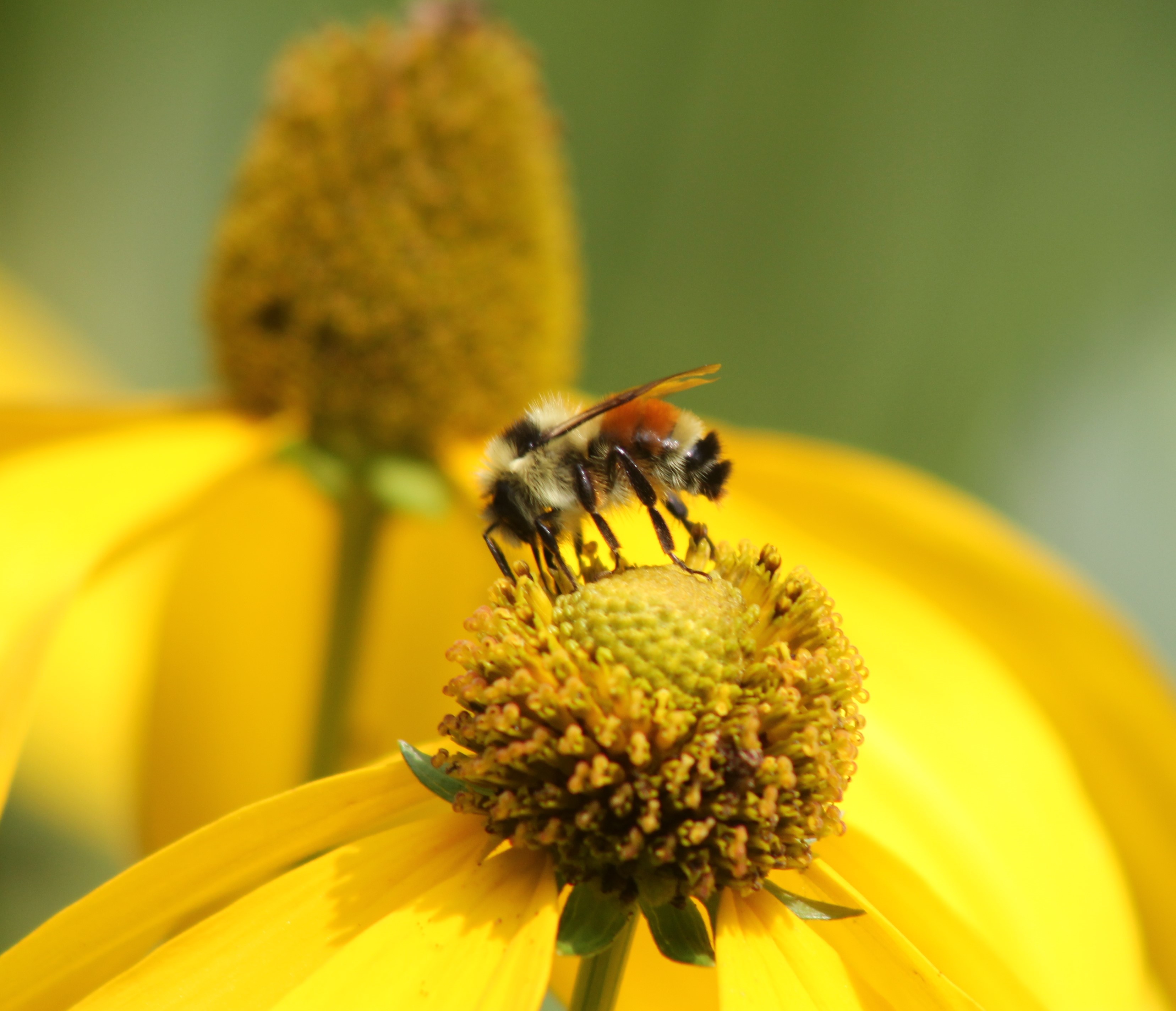Where Do Pollinators Go in the Winter?
AVRIL 12, 2019
By Anthony Colangelo, Communications Coordinator at Pollinator Partnership Canada
Where Do Pollinators Go in the Winter?
As the summer season ends and the cooler weather approaches, once magnificent and colourful flowers begin to wither and wilt, while previously buzzing gardens become stems of silence. But where do the pollinators go? Pollinators, such as bees, butterflies, and birds all display a variety of amazing and unique strategies in order to survive the cold weather and overcome the harsh climate of the approaching winter.

As the winter temperatures start to freeze the air, honey bees form special clusters inside their hives to keep warm. Worker honey bees huddle around their queen and vibrate their wings and bodies in a “shivering” behaviour in order to generate heat inside the hive. This behaviour is amazingly carried out all winter, and uses up a lot of the bees’ energy. In order to fuel this heated huddle, honey bees use their stored honey as a main source of food in order to stay energized and keep the queen and the hive at an optimal temperature throughout the winter!
Probably one of the most famous winter strategies is carried out by monarch butterflies. Monarchs migrate over 3000 miles and 5000 kilometres from Canada and the Northern United States all the way to the oyamel fir forests in Mexico. These forests provide monarchs with the perfect climate and environmental conditions while they wait for the northern winters to pass. For the butterfly species that do not migrate, strategies include surviving the winter in a dormant phase in cocoons, as caterpillars, and some can even survive as mature adults!
Just like monarch butterflies, most hummingbirds in North America also migrate far distances in the winter, such as the rufous hummingbird which can migrate up to 4000 miles and over 6000 kilometres from Alaska all the way to Mexico. Most ruby-throated hummingbirds also migrate from central and eastern Canada and the United States to Mexico and Central America. During the harsh winters of Canada and the northern United States, the flowers and insects that hummingbirds rely on for food die off, therefore hummingbirds must travel south where the temperature is warm enough to support their need for an abundance of nectar and insects to fuel their extremely fast metabolism!
Whether it be migrating to warmer areas or staying dormant in a safe spot, bees, butterflies, and birds are all pollinators that have adapted incredible strategies to survive the harsh and cold temperatures of winter. These strategies also emphasize the need for more pollinator habitat and pollinator-friendly gardens, as having an abundance of accessible pollen and nectar sources, especially in the fall, is crucial for their survival over the winter season. To help pollinators in your area survive next winter, check out our ecoregional guides (http://pollinator.org/guides) for native flowers to plant in your area!

Whether it be migrating to warmer areas or staying dormant in a safe spot, bees, butterflies, and birds are all pollinators that have adapted incredible strategies to survive the harsh and cold temperatures of winter. These strategies also emphasize the need for more pollinator habitat and pollinator-friendly gardens, as having an abundance of accessible pollen and nectar sources, especially in the fall, is crucial for their survival over the winter season. To help pollinators in your area survive next winter, check out our ecoregional guides (http://pollinator.org/guides) for native flowers to plant in your area!